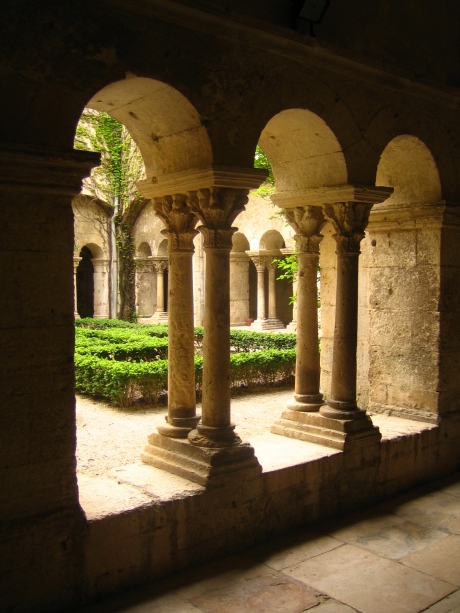Walking on the edge of the Provencal town St. Remy in the French landscape of the hospital where Vincent Van Gogh was confined, I feel different realities slide across and over, inside and outside, one another. The afternoon Vicki and I walk through the hospital grounds, storm clouds threaten but never break; we walk into foreboding.
We follow a straight gravel allee or path. There is an untidy clump suspended from a tree above us and a woman in a red jacket stands on the side, shooting a photo of our advancing group. On our right a grove of gnarled olive trees, the leaves not quite green, not quite gray, not quite purple in the shifting stormy light. All may be rectilinear, but there is a sense of underlying disorder, or is it that all outside is orderly, but my internal state is disordered. And, if my state is disordered, what was Van Gogh’s, how was Van Gogh’s, how was it different from mine?
The hospital walls are limestone blocks. In their massive stolidity they convey nothing so much as the word bourgeois — a bourgeois which has nothing in its purse but Provencal dust. A few staff cars are parked beside buidlings, but there is no human visible except for our group. There are still patients in the hospital, but they are sequestered from the public. Against the rectilinear biscuit-golden wall, a leafless winter tree on her slim trunk holds up curving limbs of black filigree. In the walled garden, the array of lavender has been cut back for the winter, shorn like West Virginia school boys on the first day of school. The irises, their fronds closely packed in fenced rectangles, are shuttered, holding nothing but the idea of their purple buds.
Inside the dark indoors, green and sunlight are cloistered within Romanesque arches.
The odd and tortured limestone outcroppings painted by Van Gogh — les alpilles — rise into the gathering storm clouds.




